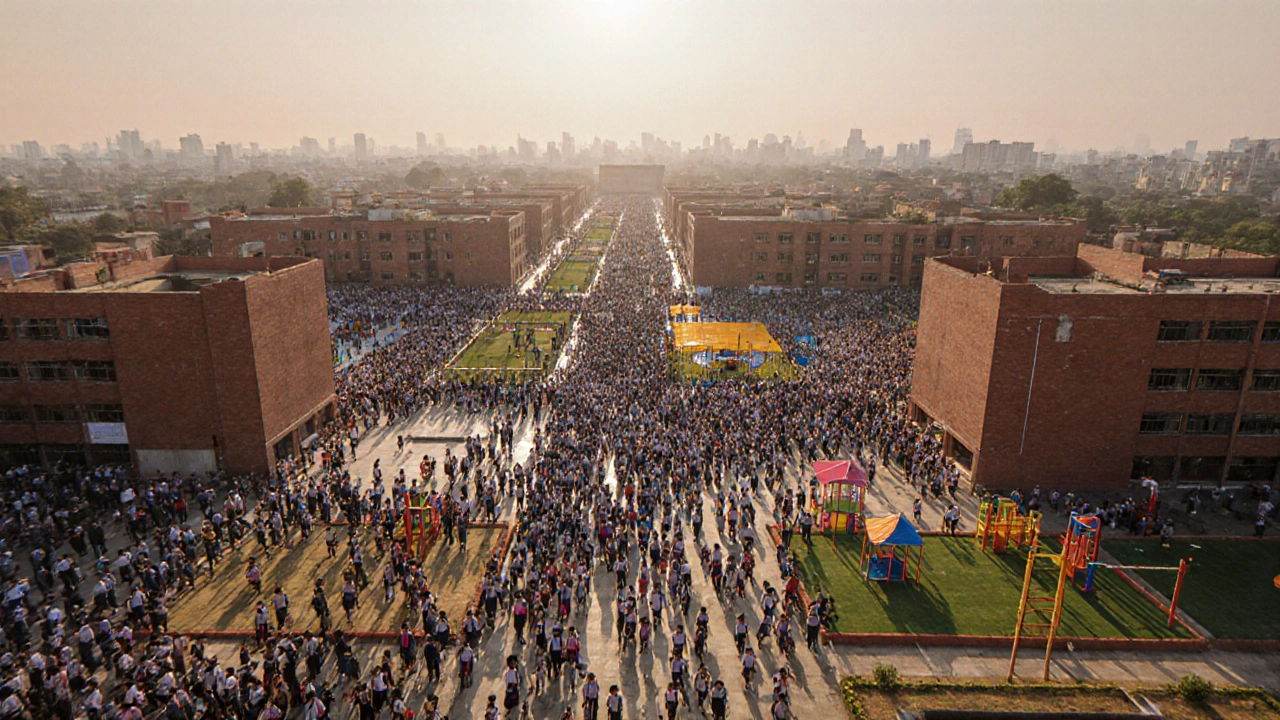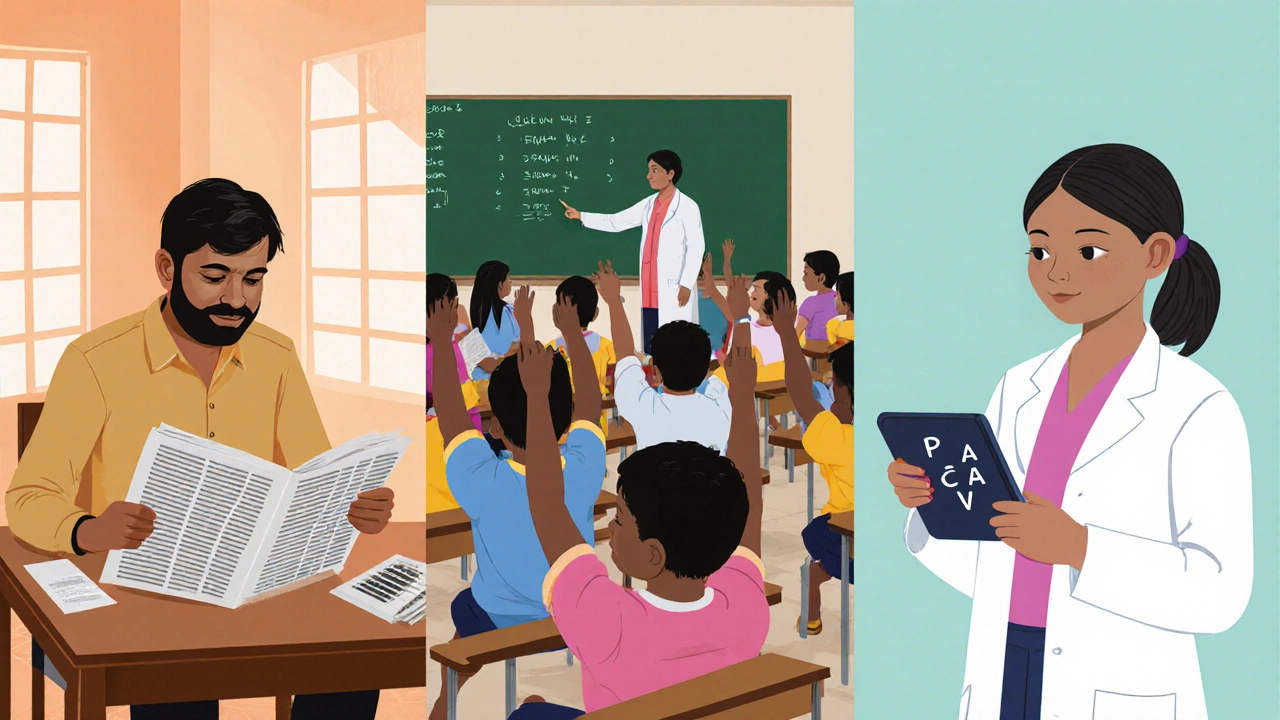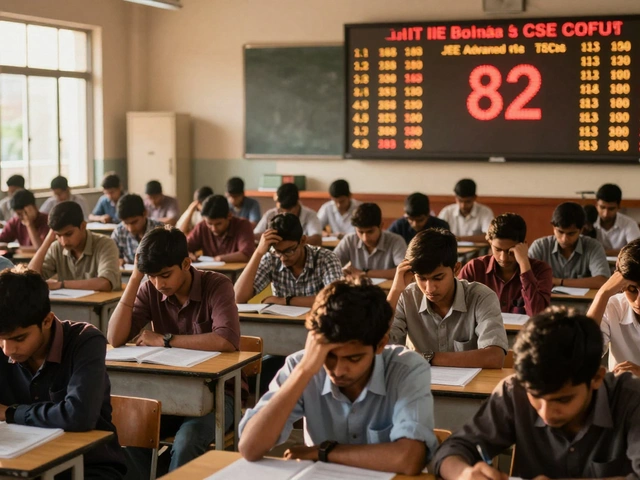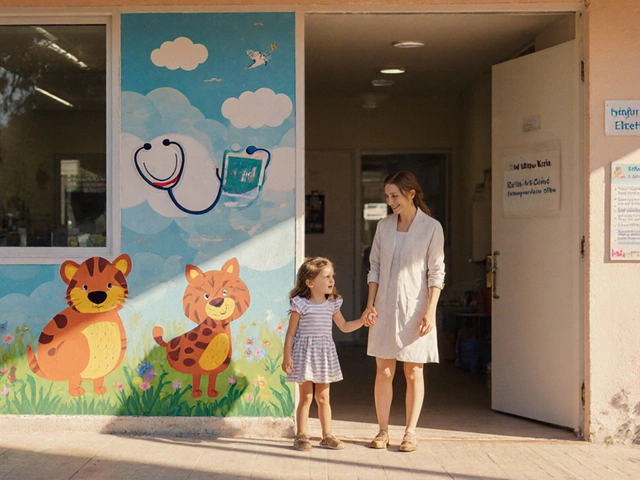Oct
22

- by Dhruv Ainsley
- 0 Comments
When talking about global education metrics, India is a South Asian nation with over 1.4 billion people and the world’s largest school system. The question on everyone’s mind-"Is India the most educated country?"-sounds bold, but it also opens a window onto how we measure learning, what data actually say, and why the CBSE syllabus matters for millions of students.
How We Gauge a Country’s Education Level
Education isn’t a single number. International bodies like UNESCO and the World Bank track dozens of indicators: adult literacy, gross enrollment ratios (GER), average years of schooling, and performance on the Programme for International Student Assessment (PISA). Each metric captures a slice of reality-literacy tells us how many adults can read a newspaper, while PISA reveals how 15‑year‑olds solve real‑world problems.
For a quick snapshot, analysts often rank countries by a composite index that weights these variables. The latest 2024 composite, released by OECD, combines literacy (30%), GER (25%), average schooling years (20%), and PISA scores (25%). The resulting “Education Quality Score” ranges from 0 to 100.
India’s Performance in Core Indicators
Let’s break down India’s numbers against the composite criteria.
- Adult Literacy Rate (2024): 77.5 % (UNESCO). While impressive compared to the 1970s, it still trails the 99 % seen in many European nations.
- Gross Enrollment Ratio (GER) - Primary to Secondary: 95 % (World Bank). This indicates near‑universal school access, a major win for a country of India’s size.
- Average Years of Schooling: 6.8 years (UNESCO). This is lower than the 8-10 years typical in high‑performing economies.
- PISA 2022 Score (Reading, Math, Science): 420, 430, and 410 respectively (OECD). These figures rank India around the 63rd spot globally.
When we plug these into the composite formula, India lands at a score of 62.7-well above the global average of 55 but far short of the 85‑plus marks posted by Finland, Singapore, and South Korea.
The Role of the CBSE Syllabus
CBSE (Central Board of Secondary Education) oversees the curriculum for roughly 25 million Indian students. Its focus on analytical thinking, continuous assessment, and a national standard has helped raise exam performance across states.
Key features that boost learning outcomes:
- Uniform Standards: Every school follows the same textbook set, reducing regional disparities.
- Continuous and Comprehensive Evaluation (CCE): Students are assessed regularly, encouraging steady study habits.
- Emphasis on STEM: Recent revisions added coding modules and practical labs, aligning with global skill demands.
Yet, CBSE alone can’t lift the national ranking. Teacher quality, infrastructure gaps, and socio‑economic factors still shape the big picture.

How India Stacks Up Against the Usual Contenders
| Country | Literacy % | GER % | Avg. School Years | PISA Avg. Score | Composite Score |
|---|---|---|---|---|---|
| Finland | 100 | 99 | 11.5 | 542 | 88.2 |
| Singapore | 97 | 98 | 12.0 | 569 | 90.1 |
| South Korea | 98 | 97 | 10.8 | 560 | 87.5 |
| United States | 99 | 94 | 9.2 | 527 | 78.3 |
| India | 77.5 | 95 | 6.8 | 420‑430‑410 | 62.7 |
| Russia | 99 | 93 | 10.2 | 525 | 76.4 |
The table makes it clear: India excels in enrollment but lags in literacy, average schooling years, and PISA results. Those gaps keep its composite score below the “most educated” threshold.
Common Misconceptions About India’s Education Ranking
1. Myth: High enrollment equals high quality. Reality: Enrolling 95 % of children is impressive, but if many drop out before completing secondary school, overall learning suffers.
2. Myth: CBSE’s national exams guarantee world‑class standards. Reality: Exams test rote knowledge more than problem‑solving, which is what PISA measures.
3. Myth: Rural-urban gaps are negligible. Reality: Rural literacy hovers around 65 %, pulling down the national average.

What This Means for Students, Parents, and Policymakers
For students, the data suggest a focus on critical thinking and language skills beyond the textbook-extra‑curricular coding clubs, debate societies, and English immersion can bridge the PISA gap. Parents can push for schools that adopt experiential learning rather than pure lecture formats.
Policymakers have a clear roadmap:
- Invest in teacher training: High‑quality teachers are the single biggest driver of student outcomes.
- Upgrade infrastructure: Reliable electricity, internet, and lab equipment are still missing in many districts.
- Revise assessment design: Align exams with international problem‑solving standards.
Quick Checklist: How to Gauge Education Quality in Any Country
- Check adult literacy rates (UNESCO).
- Look at gross enrollment ratios for primary‑secondary‑tertiary levels (World Bank).
- Note average years of schooling (UNESCO).
- Review latest PISA or TIMSS scores for analytical ability.
- Consider curriculum standards like CBSE, ICSE, or state boards.
Final Verdict
India is **not** the most educated country by any widely accepted composite ranking. Its massive enrollment figures are a strength, but lower literacy, shorter schooling spans, and modest PISA scores keep it behind the current leaders-Finland, Singapore, and South Korea. The CBSE syllabus, while robust, is just one piece of a larger puzzle that includes teacher quality, infrastructure, and socioeconomic equity.
How does the CBSE syllabus differ from other Indian boards?
CBSE offers a uniform, national curriculum focused on analytical skills and continuous assessment, whereas state boards often tailor content to regional languages and local contexts. This uniformity helps students compete nationally but doesn’t automatically raise international test scores.
Why is PISA considered a reliable indicator of education quality?
PISA evaluates 15‑year‑olds on reading, mathematics, and science using real‑world problem scenarios. Unlike enrollment data, it measures whether students can apply knowledge, making it a strong proxy for a country’s ability to prepare learners for modern challenges.
Can India improve its ranking without changing the CBSE curriculum?
Yes. Enhancing teacher training, upgrading school infrastructure, and addressing rural‑urban inequities can raise literacy and average schooling years-key components of the composite index-even if the curriculum stays the same.
How do literacy rates in India compare to the global average?
India’s adult literacy stands at about 77 % in 2024, while the global average is roughly 86 %. The gap is wider in rural areas, where literacy can dip below 65 %.
What steps can parents take to boost their child’s performance on international assessments?
Encourage critical‑thinking activities-like puzzles, debates, and coding clubs-outside school hours. Supplement textbook learning with English‑language media and practice tests that mimic PISA formats.





